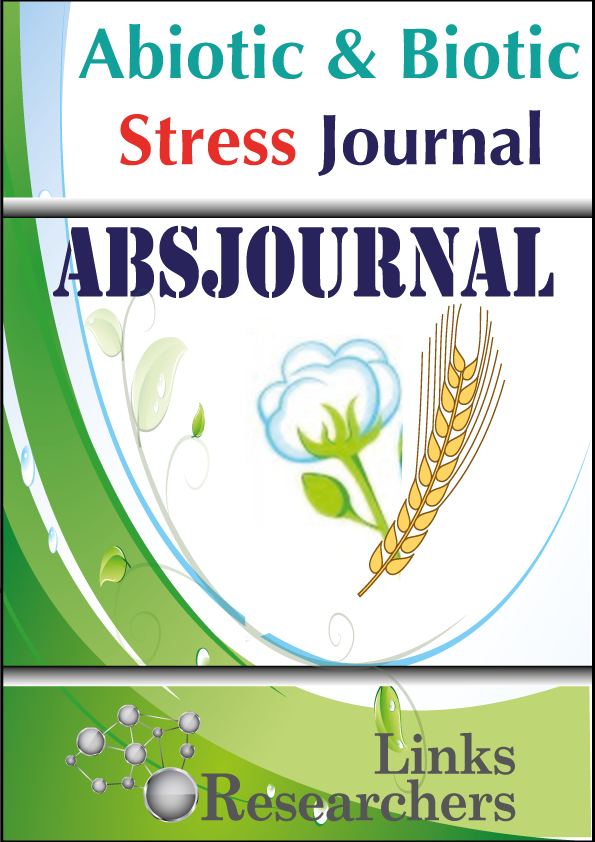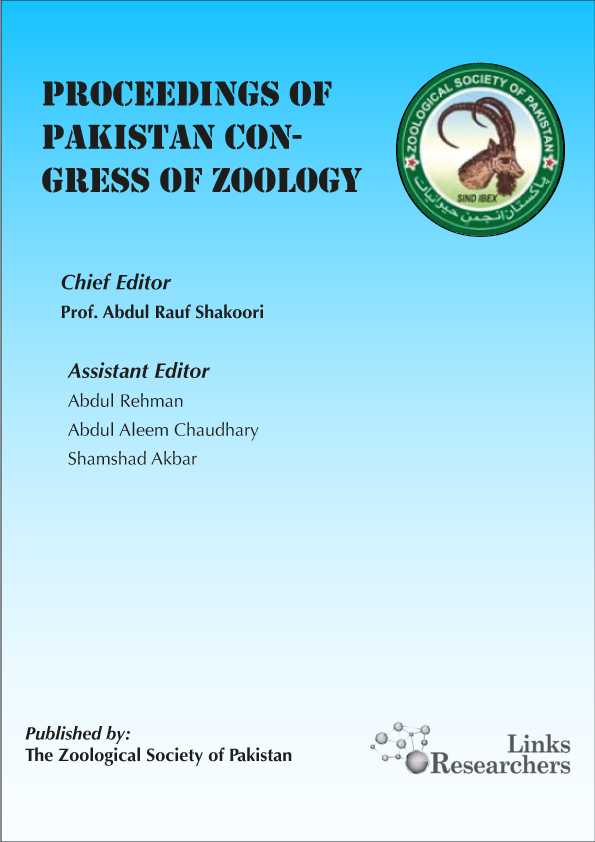Matheus Nunes Weber1, Simone Silveira1, André Felipe Streck1, Luís Gustavo Corbellini2, Cláudio Wageck Canal1*
Simon Mwangi Kihu1*, George Chege Gitao1, Lily Caroline Bebora1, Njenga Munene John1, Gidraph Gachunga Wairire2, Ndichu Maingi1, Raphael Githaiga Wahome1, Davis Njuguna Karanja1, Julius Otieno Oyugi3, Ernest Lutomia3
Gerald Misinzo1,*, Tebogo Kgotlele1, Epaphras A. Muse1, Jan Van Doorsselaere2, Mikael Berg3, and Muhammad Munir4
Muhammad Mushtaq
E-mail | [email protected]
Muhammad Zahid1*, Muhammad Salman2, Shah Alam Khan2, Alamzeb1, Inamullah Khan1
Asma Noshad1, Mudassar Iqbal1*, Zafar Iqbal1, Hamida Bibi2, Saifullah3, Salma Bibi4, Hamid Ullah Shah1
Mudasir Irfan Dar*, Fareed Ahmad Khan and Farha Rehman
E-mail | [email protected]
Ashley C. Banyard1* and Satya Parida2
Vinayagamurthy Balamurugan*, Gurrappa Naidu Govindaraj and Habibur Rahman
Moustafa Kardjadj1, Pam Dachung Luka2
Gurrappa Naidu Govindaraj, Vinayagamurthy Balamurugan*, Habibur Rahman
Ahmed Zein Mahmoud1, Muaz Abdellatif 2, 3*, Luai Shazali1
Amitha Reena Gomes1, Belamaranahally Muniveerappa Veeregowda2, Sonnahallipura Munivenkatappa Byregowda1, Vinayagamurthy Balamurugan3*
Klara Fischer1*, Erika Chenais1,2, Emeli Torsson1, Jonas Johansson Wensman1
Mohammad Mushfiqur Rahman1, Rokshana Parvin1, Ataur Rahman Bhuiyan1, Mohammad Giasuddin2, Shah Md. Ziqrul Haq Chowdhury3, Mohammad Rafiqul Islam1, Emdadul Haque Chowdhury1*
Muhammad Abubakar1*, Shumaila Manzoor2, Jonas Johansson Wensman3, Emeli Torsson3, Qurban Ali1 and Muhammad Munir4
Muhammad Zahid1, Muhammad Hamid Bashir1*, Bilal Saeed Khan1 and Muhammad Shahid2
Ambreena Hafiz1, Tanzeela Riaz2 and Farah Rauf Shakoori1*
Manzoor Hussain*, Miloslav Zouhar and Pavel Ryšánek
Muhammad Basit1, Shafqat Saeed2, Mushtaq Ahmad Saleem3, Rana Zulfiqar4
Jose M. Rojas, Noemi Sevilla and Veronica Martin
Marryam Bakhtawar1, Qamar Saeed1* and Naeem Iqbal2
Rashid Ahmed Khan* and Muhammed Naveed
G.E. Odo1*, E.J. Agwu1, N.I. Ossai2, C.O. Ezea3, J. Madu1 and V. Eneje2
Sidra-Tul-Muntaha1, Muhammad Sagheer1*, Mansoor-ul-Hasan1 and Shahbaz Talib Sahi2
Aziz-ul-Rahman, Farooq Yousaf, Naveed Anwar and Muhammad Abubakar
Ahmed Zein Mahmoud, Muaz Abdellatif and Ahmed Abdalla
Amjad Ali and Abbas Ullah Jan
Hina Fatima, Lal Almas and Bushra Yasmin
Sana Irshad Khan1*, Zafar Iqbal2, Hamid Ullah Shah2 and Shaukat Hussain3
Saqib Ali1, Suliman Ali1, Lina1, Wen Zhou1, Muhammad Irfan Waris1, Ashfaq Ali2 and Man Qun Wang1,*
Neerja Agrawal, Mukesh Srivastava, Akhilesh Tripathi and Amrendra Singh
K.N. Ahmed, S.H.A. Pramanik, M. Khatun A. Nargis M. R. Hasan
Sitansu Pan, Surojit Khalko and Amrita Das
Palash Mondal1 , Amitava Konar2 and N. Johnson Singh3
M. D. Maji, N.K.Das, S. Chatterjee, A. Ghosh and A.K. Bajpai
1N. Johnson Singh, 2Amitava Konar and 3Palash Mondal
B. Ramanujam, R. D. Prasad, S. Sriram and R. Rangeswaran
1S. A. Khan and 2S. Jha
K.N. Ahmed and M.R. Hasan
Bijan Kumar Das
S. Subharani, S. S. Thorat, N. Abem, L. Amit Kumar and T. K. Singh
Amitava Konar, Palash Mondal and N. Johnson Singh
K.N. Ahmed , M.A. Al-Helal, N-E-P. Khanom, S. Bulbul
P. Barma and S. Jha
M. S. A. Mamun and M. Ahmed
Nilesh Suresh Gole and Bijan Kumar Das
Amitava Konar, Kiran A. More and Pradip Mondal
S.K. Sahoo
Goutam Samui and Shantanu Jha
Madhuban Gopal, Rajesh Kumar and Arunava Goswami
M. A. Al-Helal, K. N. Ahmed, N-E-P. Khanom, and S. Bulbul
S. Patra, V.W. Dhote, SK F. Alam, B.C. Das, M.L. Chatterjee and A. Samanta
D.K. Hazra, Megha Pant, S.K. Raza and P. K. Patanjali
Anjan Bhattacharyya, Suhrid Ranjan Barik & Pritam Ganguly
Goutam Samui and S. Jha
Amitava Konar and N. Johnson Singh
Dhananjoy Mandal
Dhananjoy Mandal 2K. Baral 3M. K. Dasgupta
Shekharappa
Sujoy Mondal and S. S. Ghatak
V. S. Desai, S. D. Desai, A. J. Mayekar and V.G. More
...
Manidipa Chowdhury
N. Mandi and A. K. Senapati
V. N. Jalgaonkar, M. S. Gawankar, V. W. Bendale and P. D. Patil
S. Pal and I. Sarkar
Gadeeyya G and Ratna Kumar P.K.
Muhammad Zafarullah Khan
Sania Shaheen1*, Hina Fatima2 and Muhammad Azeem Khan3
Ahmed Zein Elabdeen Mahmoud1, Muaz Magzob Abdellatif2* and Mohamed Abdelsalam Abdalla3
Wali Khan1, Naushad Khan2 and Shaista Naz2*
Jawad Anwar* and Zafar Iqbal
Muhammad Zafarullah Khan*, Shah Saud Ahmad and Asif Nawaz
Imran Ali Rajput1*, Tajwer Sultana Syed1, Ghulam Hussain Abro1, Imran Khatri1 and Abdul Mubeen Lodhi2
Phong Huy Pham*
Muhammad Zahid1*, Muhammad Ather Javed Khan2, Muhammad Idrees3 and Ahmad Kamran Khan4
Muhammad Jamal Nasir*, Anwar Saeed Khan and Said Alam
Muhammad Tariq1*, Muhammad Khawar Hussain1, Zilakat Khan Malik2 and Noor Jehan1
Ayesha Bibi*, Musharaf Ahmad and Shaukat Hussain
Saima Akhtar Qureshi1 and Asim Anwar2*, Ather Maqsood Ahmed3
Raania Ahsan* and Zafar Altaf**
Zaheeruddin Mirani*and Aslam Memon**
Akhlaq Ahmad, M. Anwar Arain*, Rahila Nazli**, Syed Anser Rizvi***,
Mubarik Ahmed* and Farzana Ibrahim****
Corresponding author: [email protected]
Amir Khatam*, Sher Muhammad and Ijaz Ashraf**
Sara Khalid*, Khalid Mahmood Qureshi*, Ishfaq Ahmad Hafiz*, Khalid Saifullah Khan* and Usman Shaukat Qureshi*
Naheed Akhtar*, Awais Iqbal**, Habib Iqbal Javed*, Javed Khan*, Muhammad Riaz*, Waseem Ahmad Gillani*, Tariq Mahmood*, Awais Rasool* and Tahira Yasmin*
Ali Ahsan Bajwa*, Ehsanullah*, Shakeel Ahmad Anjum*, Wahaj Nafees*, Mohsin Tanveer* and Hafiz Salman Saeed*
Muhammad Sharif*, Muhammad Azam Niazi*, Abdul Jabbar** and Sajida Taj***
Aniqa Iram*, Javed Khan**, Nadeem Aslam**, Ehsan-ul-Haq**, Habib Iqbal Javed**, Muhammad Irfan*, Awais Rasool*, Muhammad Ishaque Mastoi** and Sumera Aslam*
Mian Sabahatullah*, Manzoor Ahmad Mashwani**, Qurratul Ain Tahira* and Mian Inayatullah*
Mazher Abbas*, Irfan Mehmood*, Arshed Bashir*, Muhammad Ather Mehmood* and Sonila Hassan*
Amjad Pervez*, Syed Muzaffar Ahmed*, Akhlaq Ahmad** and Qazi Mehmood Ali**
Muhammad Mohsin Raza*, Muhammad Aslam Khan*, Irfan Ahmad**, Ali Ahsan Bajwa***, Hafiz Muhammad Usman Aslam*, Badar Ahsan Ullah****, and Kashif Riaz*
Muneeb Zafar*, Tahir Mehmood**, Irfan Ahmad Baig**, Abdul Saboor** Mazher Abbas***, Shumaila Sadiq** and Khalid Mahmood****
Farid Asif Shaheen*, Sadia Parveen*, Ahmed Zia**, Ghulam Qadir*,
Mureed Husain*** and Rifat Ullah Khan****
Ishaq Ahmad*, Abdul Rehman**, Ehsan –Ul- Haq*** and Arif Mahmood****
Syed Waqar Shah* and Muhammad Ather Rafi*
Amjad Ali1, Rajan Shrestha2, Ghaffar Ali1, Irfan Ullah1 and Salman Khan1
Amjad Ali1, Rajan Shrestha2, Ghaffar Ali1, Irfan Ullah1 and Salman Khan1
Urooba Pervaiz1, Abdus Salam1, Dawood Jan2, Ayesha Khan1 and Mahmood Iqbal1
Sher Nawab Khan* and Ghulam Hassan
Safdar Ali1*, Obaidullah Shafique1, Tariq Mahmood2, Muhammad Amir Hanif1, Ijaz Ahmed3 and Bashir Ahmad Khan4
Abdul Basit1, Muhammad Zeeshan Majeed1,4*, Sohail Ahmed2, Gohar Ali2 and Muhammad Javaid3
Muhammad Fiaz1*, Muhammad Afzal1 and Muhammad Zeeshan Majeed1,2
Wasim Javaid1, Farid Asif Shaheen1*, Farah Naz2 and Muhammad Usman Raja2
Muhammad Shoaib Saleem*, Muhammad Faheem Akbar, Amjad Sultan and Saqib Ali
Syed Muhammad Hassan Raza1*, Syed Amer Mahmood1, Veraldo Liesenberg2 and Syed Shehzad Hassan1
Jahangir khan* and Abbas Ullah Jan
Ahmed Zein Elabdeen Mahmoud1, Muaz Magzob Abdellatif2* and Mohamed Abdelsalam Abdalla3
Sadiqa Begum1, Murad Khan2* and Noor Pao Khan1
Muhammad Haroon Hullio1,4, Abdul Ghani Lanjar2, Abdul Rahman Dhuyo3, Imran Khattri4 and Agha Mushtaque Ahmed4*




















